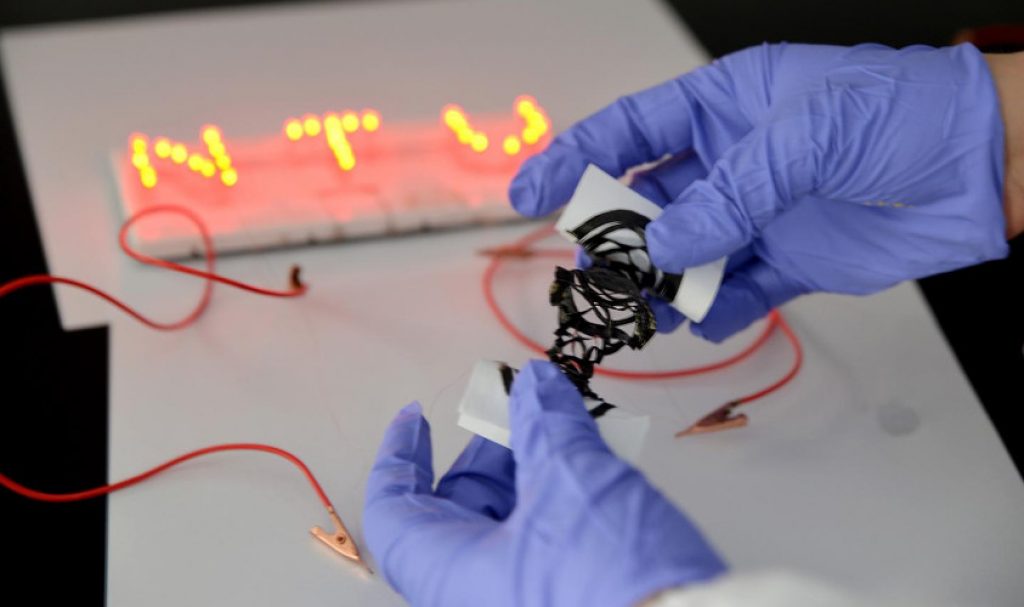
Scientists at Nanyang Technological University (NTU), Singapore, have created a customizable, fabric-like power source that can be cut, folded or stretched without losing its function. Their findings are reported in Advanced Materials.
Wearable electronics need to be flexible and capable of retaining their function even under high deformation stress. Ideally, they should also have flexible batteries that can store charge for prolonged periods of time and are repeatedly rechargeable.
In this study, a research group led by Professor Chen Xiaodong, Associate Chair (Faculty) at the School of Materials Science & Engineering at NTU, has developed a customizable supercapacitor that fulfils all the above requirements.
Their invention is made of strengthened manganese dioxide nanowire composite material. While manganese dioxide is a common material for supercapacitors, the ultralong nanowire structure, strengthened with a network of carbon nanotubes and nanocellulose fibers, allows the electrodes to withstand the associated strains during the customization process.
When fabricated as a honeycomb-like structure, the supercapacitor had the ability to store an electrical charge four times higher than most existing stretchable supercapacitors. In addition, when stretched to four times its original length, it maintained nearly 98 percent of the initial ability to store electrical energy, even after 10,000 stretch-and-release cycles.
The researchers also showed that when the customizable supercapacitor was paired with a sensor and placed on the human elbow, it performed better than existing stretchable supercapacitors. Their supercapacitor was able to provide a stable stream of signals even when the arm was swinging. These signals were then transmitted wirelessly to external devices, such as one that captures a patient’s heart rate.
The authors believe that the editable supercapacitor could be easily mass-produced as it would rely on existing manufacturing technologies. Production cost will thus be low, estimated at about SGD$0.13 (USD$0.10) to produce 1 cm2 of the material.
“A reliable and editable supercapacitor is important for the development of the wearable electronics industry. It also opens up all sorts of possibilities in the realm of the ‘Internet-of-Things’ when wearable electronics can reliably power themselves and connect and communicate with appliances in the home and other environments,” said Chen.
“My own dream is to one day combine our flexible supercapacitors with wearable sensors for health and sports performance diagnostics. With the ability for wearable electronics to power themselves, you could imagine the day when we create a device that could be used to monitor a marathon runner during a race with great sensitivity, detecting signals from both under and over-exertion,” he added.
